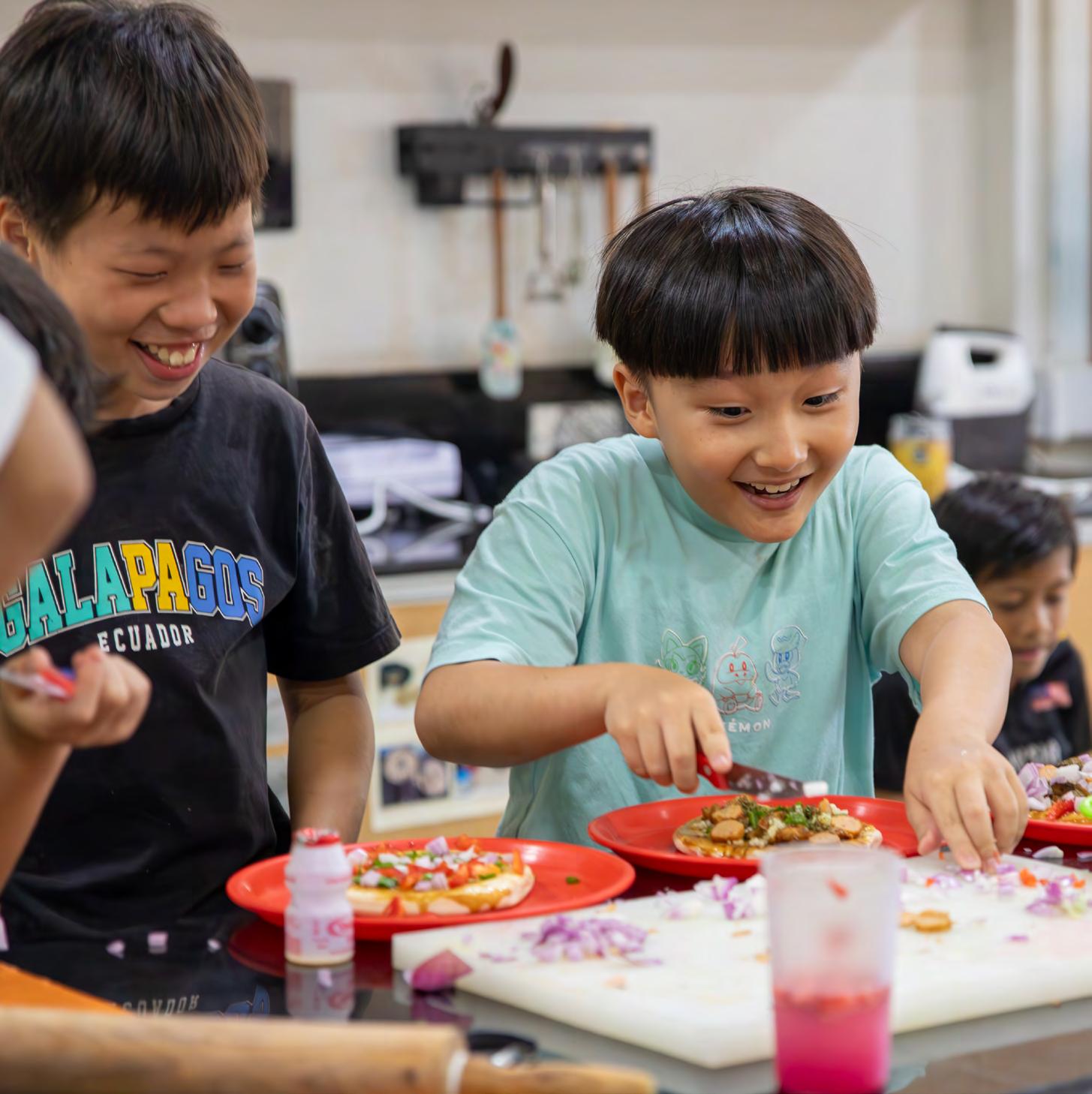

Elementary School Learning Framework and Course Guide 2025
- 2026
COVER ART BY: EMILY, CLASS OF 2032

A LETTER FROM THE PRINCIPAL
Our Elementary Section serves students from Early Years through Grade 5, recognizing that learning takes place across a variety of environments—including home, school, and the broader community. Parents and teachers work in partnership to support this learning. When parents understand what their children are doing at school, they can create an enriched and supportive environment at home.
This Elementary School Curriculum Guide is designed to give parents an overview of their child’s education by fostering an understanding of what students will explore at each grade level.
Our curriculum is inquiry-based, aligned with standards, and planned using the “Understanding by Design” (UbD), or “Backwards by Design,” framework.
In the homeroom, where our Elementary students spend the majority of their day, learning is organized through transdisciplinary units that integrate subject areas such as Reading, Writing, Math, Science, and Social Studies. These units are designed to reflect authentic connections across disciplines, allowing students to explore big ideas and real-world concepts in meaningful ways. Additional focus areas, such as technology, personal, social and emotional education (PSE), health, and child protection, are intentionally woven into the fabric of each unit, serving as essential drivers of inquiry and supporting the development of the whole child.
Beyond the homeroom, students engage in specialist subjects including Physical Education (PE), Music, Art, Design Technology, Indian Studies, and World Language (Spanish, beginning in Grade 3).
Each year level features a distinct set of events, projects, and learning units that are intentionally designed to match the developmental needs of the child. Our curriculum continues to evolve, becoming increasingly personalized and inquiry-driven/play-based, in order to meet the diverse needs of our youngest and oldest AISC learners.

Lynn Schneider Elementary School Principal
AISC Core
A community where diverse paths meet, learners innovate, and we make meaningful change together. Our Vision
Our Mission
Together, we nurture learners who chart their unique paths, transforming curiosity into purpose, challenges into growth, and knowledge into action.
Our Values
#Discovery
#Wellbeing
#Responsibility
#Purpose
#Belonging
De nition of Learning
Learning is a transformative, re ective process of building understanding, empowering learners to think deeply, innovate, collaborate, and act with purpose.
VISION FOR AN AISC LEARNER

Critical Thinkers
De ne, analyze, evaluate, and solve complex problems.
Resilient Learners
Embrace challenges, persist through di culties, learn from feedback, and adapt to new situations.

E ective Collaborators
Collaborate with empathy while learning from and with each other.


Skillful Communicators
Communicate clearly and purposefully across diverse contexts and media.

Digital Navigators
Leverage technology creatively, responsibly, and ethically.
Change Makers
Transfer and apply skills, knowledge, and understanding to make a di erence locally and globally.







AISC Language Philosophy
ES Learning Framework and Course Guide 2025 - 2026

Teachers instruct & assess in English.
m m uni t y membersinteract with each
Students use any resource, linguistic or otherwise, to be successful.
l a n gau eg .
otherusingacommon
KOREAN
FRENCH
Philosophie linguistique de l’AISC


seL mem
. Les enseignants enseignent et évaluent en anglais.
b r e s d e l a communautéinteragissent les uns aveclesautresaumoyen
Les apprenants sont libres du choix des ressources, linguistiques ou autres, pour réussir.









WELLBEING AND SOCIAL EMOTIONAL LEARNING
Counseling
Our Elementary Counseling Program is designed to support the holistic development of students from Early Years through Grade 5. Grounded in the International School Counseling Association (ISCA) standards, our program focuses on fostering social-emotional learning, enhancing self-awareness, and promoting positive interpersonal relationships. Through a variety of engaging activities and lessons, our counselors work collaboratively with students, teachers, and parents, to create a supportive and inclusive environment. Our goal is to empower students with the skills and strategies they need to navigate challenges, build resilience, and thrive both academically and personally. We are committed to nurturing each child’s emotional wellbeing and fostering a strong foundation for lifelong learning and success.
Responsive Classroom
The Elementary School utilizes an educational approach to building collaborative communities called Responsive Classroom. Responsive Classroom is a studentcentered, social and emotional learning approach to teaching and discipline. It is a set of research and evidence-based practices designed to create safe, joyful, and engaging classroom and school communities for both students and teachers. The emphasis is on helping students develop their academic, social, and emotional skills in a learning environment that is developmentally responsive to their strengths and needs. The Morning Meeting is one practice of Responsive Classroom that all Elementary students participate in daily. There
are four components of the Morning Meeting. These components include the greeting, sharing, group activity and a morning message to help welcome students into the class, build community and prepare students for the day of learning.
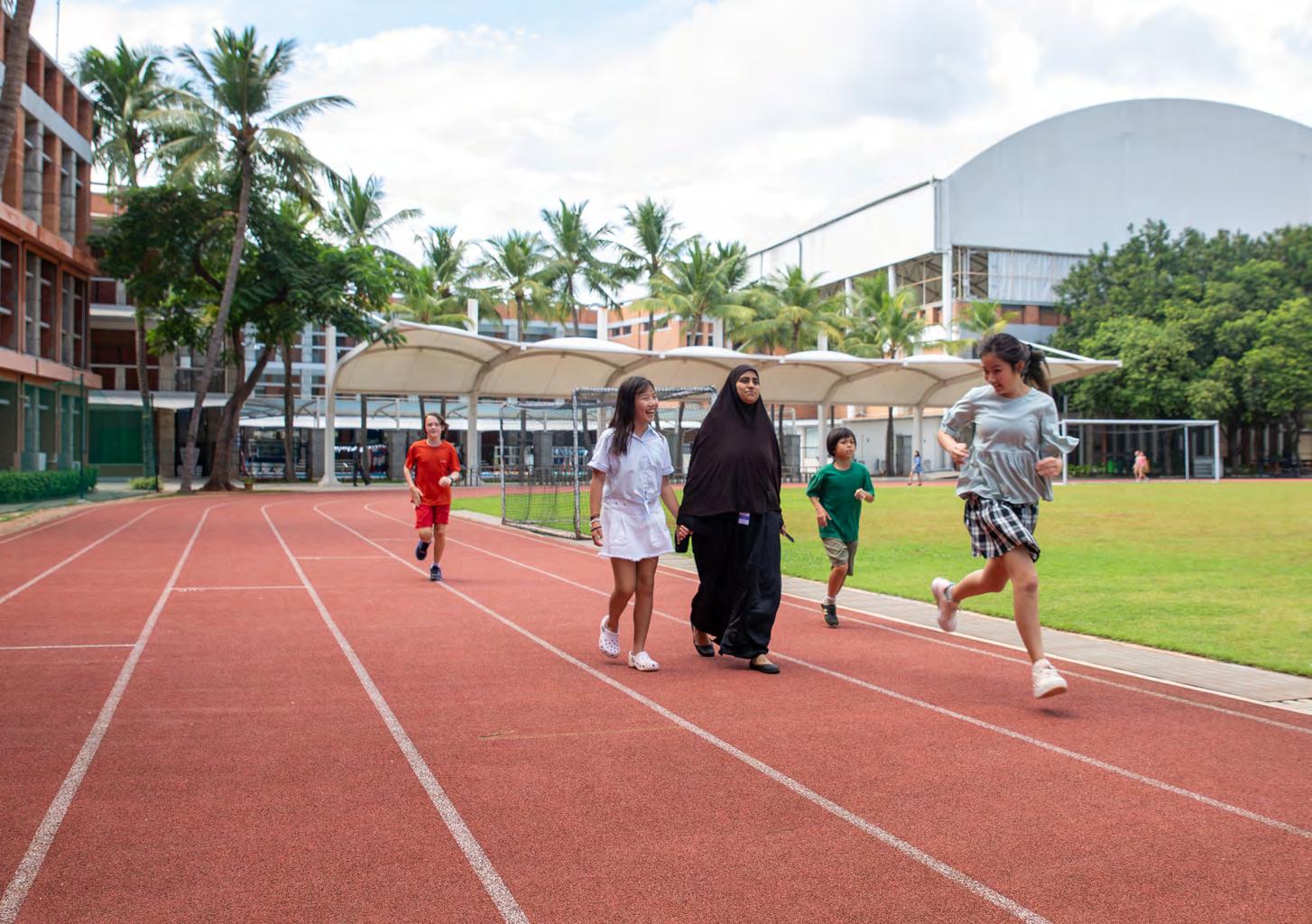

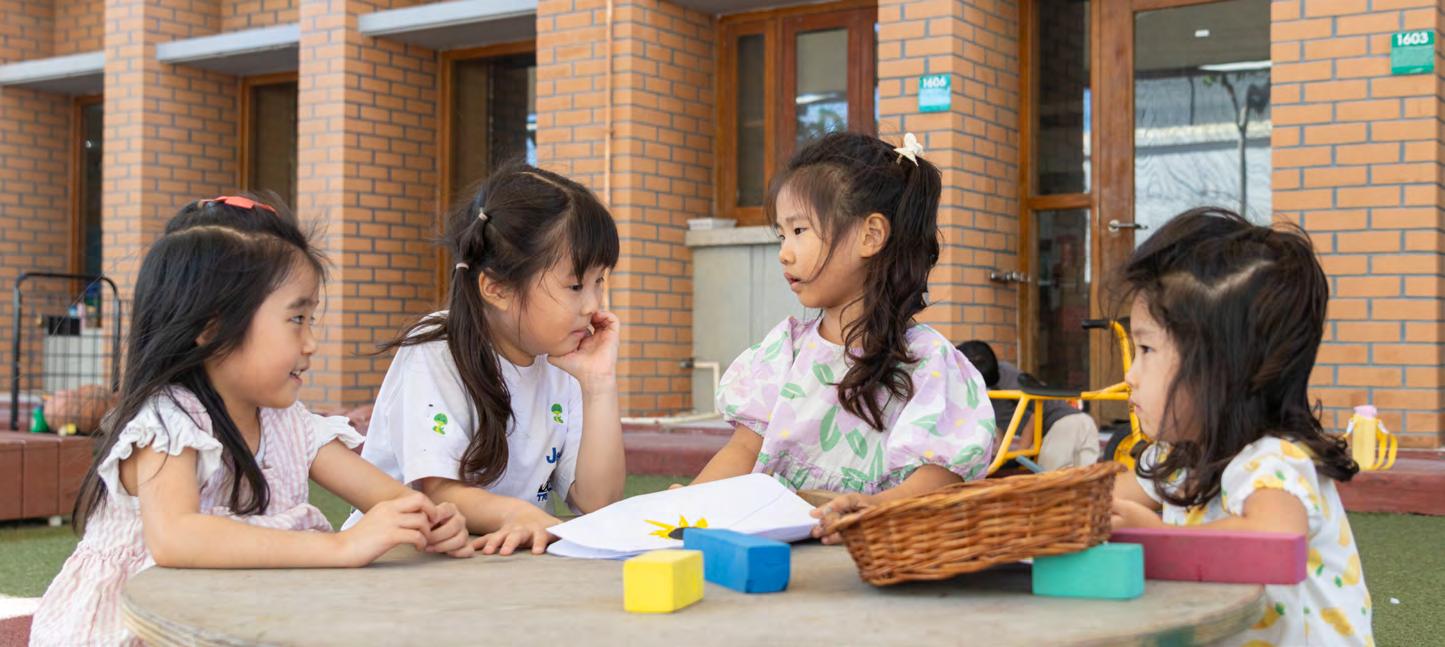
EARLY YEARS ENVIRONMENT AND CURRICULUM
Children learn best through active exploration in an environment which is rich in materials and opportunities to interact, work, and play. At AISC, we create those opportunities to support and extend children’s cognitive growth, interpersonal skills, kinesthetic learning, and social and emotional development through play.
We believe children learn best when provided with opportunities to engage in activities that inspire curiosity and thinking. Teachers facilitate learning experiences that encourage children to pursue their independent interests, make deep connections, and extend their knowledge. Because we believe that each child is a unique individual, our Early Years Program provides inclusive settings that recognize children’s varied abilities, interests, needs, and learning styles.
AISC values the diversity within our community and we intentionally work to build strong partnerships between home and school.
Multi-Age
We offer a multi-age program for three- and four-year olds. We believe there are strong benefits for both three- and four-year old children being together in the same classrooms. Our multi-age classrooms provide younger and older children opportunities to develop a sense of social belonging and interdependency. Younger children gain a sense of security being with older children, and they engage in more complex and interactive social play. Younger children also are more likely to mirror the language and problem-solving skills of their older
age peers. Spending time with their younger age peers, older children gain an increased sense of confidence about their own skills. They also exhibit more sharing, explaining, and nurturing behaviors as well as take on leadership roles in the classroom. Multi-age classrooms in Early Years allow children to develop and grow at their own pace while promoting their strengths and supporting their individual needs.
Outdoor Learning Center (OLC)
Directly behind the Early Years classrooms, along the eastern wall of our AISC campus, is our Outdoor Learning Center (OLC). This area is a continuation of the Early Years classrooms and is considered a learning environment first, and a recess space second. Children from Early Years and Kindergarten enjoy this space throughout their day and are exposed to numerous opportunities to enhance their development and engage in big body play such as running, jumping, balancing, throwing, and catching. Children might explore the grassy mounds, crawl through the tunnels, make mud pies in the mud kitchen, ride on tricycles, or play in the sand.
Learning through Play
As young children grow and develop they are continually exploring the world around them. They form ideas about how things work, they learn the names of different objects and actions, and they begin to relate to other children and adults. Based on years of research, we know play is the predominant way of how children learn and make connections in early childhood. With their imagination, they immerse themselves in play by testing out their ideas as they move objects around, build structures, draw and write out images and words in their mind, look at pictures and words in books, act out different roles in pretend play, count items, learn to understand their feelings and the feelings of others, and make friends. Play not only allows children’s ideas and interests to come alive in imaginary and real ways, but is foundational to how children grow and develop in these early years.
Emergent Curriculum
An emergent curriculum fosters children’s ideas and integrates their learning across different developmental areas. Teachers guide children’s learning as they explore, discover, and create. The classroom and Outdoor Learning Center play a pivotal role in how teachers set up those environments to
promote opportunities and intentionally build off of children’s ideas and explorations. Teachers engage children in projects that promote language, early literacy, early numeracy, physical and social-emotional development. Through systematic planning and review of documentation, teachers model and scaffold to enhance children’s learning. Teachers carefully listen to and observe children during play. Teachers reflect on what they see and hear in the classroom, and in turn, teachers provide vocabulary around different topics, and ask questions to deepen children’s understanding and elevate their thinking.
Below is an example of a Supermarket Project

Introduction
We observed that children were playing a lot with carrying food items in baskets, rather than cooking in the kitchen. So we asked them if they would like to help us convert the kitchen into a supermarket or grocery store, and they agreed!
The Process
A few pictures of supermarkets were shown during the morning meetings, and discussions took place as to how to set it up.
Some children volunteered to cut red strips of paper to make a banner, one of them wrote “Supermarket” on a piece of paper, and put it up.
Some of them made labels for the items they were to sell, a few made money,
and a couple of them made a list of items available. They began playing…
One day, while the children were playing, someone wanted to know who was in charge of the store. So two students made name tags and wore them around their necks.
A few days later, one of them suggested having a sale. So they made signboards that read “Sale” and 5% discount coupons were also handed out.
Sometimes, the staff were busy inside and did not know that customers were waiting outside… so two other students decided to fix a bell to alert them.
Children continued playing and also shared information about their experiences of going to supermarkets with their parents. Hence, the parents were requested to send in pictures of their child at a supermarket.
Learning Outcomes
• Language & Literacy
Through play, they developed their vocabulary by learning the names of fruits, vegetables, condiments, and any other items they had for sale and words such as “scanner” and “cash register”. They also started to read words and practiced their writing skills by making signs.
• Physical Development
• Fine motor skills
• Writing, cutting, pasting, typing on the cash register, picking fruits and vegetables
• Gross motor skills
• Carrying baskets, sweeping, mopping
• Social and Emotional Development
Shop play is perfect for developing social skills. Playing together requires negotiation, cooperation, and understanding as children assign roles and combine their desires for how the game should be played. If two children want to be the shop keeper they will need to learn to take turns, and in order to have fun together they will have to share.
• Numeracy (Introducing the Concept of Money)
Children enjoy typing in numbers on a calculator or cash register, and as
they get older these numbers start to mean something. Kids can have fun pricing items, adding up, and giving change, while building vital skills.
Learning about the concept of money— that we have to exchange money for goods, and that your money will run out if you buy too much— is also a valuable life lesson that can be taught through play.
Conclusion
To conclude our Supermarket Project, we linked the classroom experience with the real world—accompanying their parents to a supermarket!


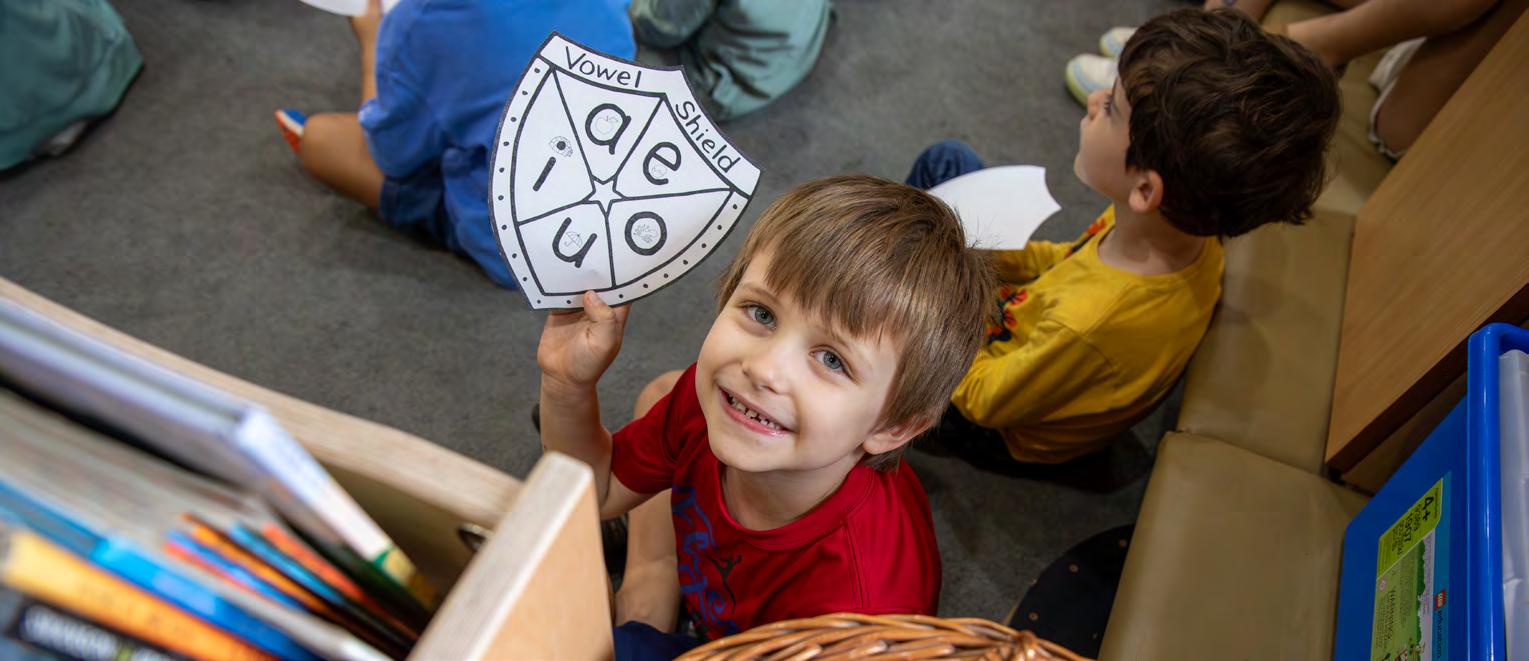
SUBJECT AREA AND PROGRAMMATIC OVERVIEWS
ENGLISH LANGUAGE ARTS
AISC’s Disciplinary Transfer Goals for English Language Arts
Students will be able to independently use their learning to…
• Actively listen to understand how language can be used to connect to and understand the perspectives of others;
• Develop and nurture a habit of reading, writing, speaking and listening for personal enjoyment and critical discourse;
• Engage in purposeful writing to flexibly move through the writing process;
• Use clear and specific language to express ideas, respond to others, and refine their own perspectives with confidence; and
• Engage in collaborative discussions appropriate to task, audience and purpose with diverse partners to express, develop and refine thinking.
Literacy in the Elementary School
The goal of the AISC Elementary English Language Arts Program is to develop confident readers, writers, speakers, and listeners who can use language to connect, think critically, and express themselves clearly. Teachers provide explicit instruction through whole-class mini-lessons, small groups and individuals. Students build strong literacy habits through a workshop model
that includes phonics, word study, reading, writing, speaking, and listening. They explore different genres, write for authentic purposes, and engage in collaborative conversations. Our program follows Common Core grade-level standards and benchmarks, helping students strengthen their skills, understand big ideas, and make meaningful connections across subjects.



MATHEMATICS
AISC’s Disciplinary Transfer Goals for Mathematics
Students will be able to independently use their learning to…
• Think critically about, make sense of, and persevere to solve authentic real world problems using a variety of approaches and multiple representations;
• Evaluate, extend, and celebrate their processes and solutions to reflect upon areas of growth or limitation;
• Use effective mathematical reasoning to construct viable arguments and critique the reasoning of others;
• Communicate precisely when making mathematical statements and express answers with a degree of precision appropriate for the context of the problem/situation; and
• Approach mathematics as a mathematician with curiosity, joy, adventure, playfulness, and empowerment.
Mathematics in the Elementary School
As math teachers and learners at AISC, we recognize that mathematics is essential for describing and interpreting the world around us. Application of mathematics becomes possible through conceptual understandings as well as procedural skills including basic facts, principles, and methods. To develop these intertwined ways of knowing math, we value multiple approaches and perseverance, encouraging students to inquire and problem-solve. Students
engage in age-appropriate problems and investigations in the areas of numbers, operations, algebraic thinking, measurement, data, and geometry. Our program follows Common Core grade-level standards and benchmarks. Students are encouraged to explore, develop, test, discuss, and apply ideas: to see mathematics as something that is fluid, vibrant, creative, and relevant.
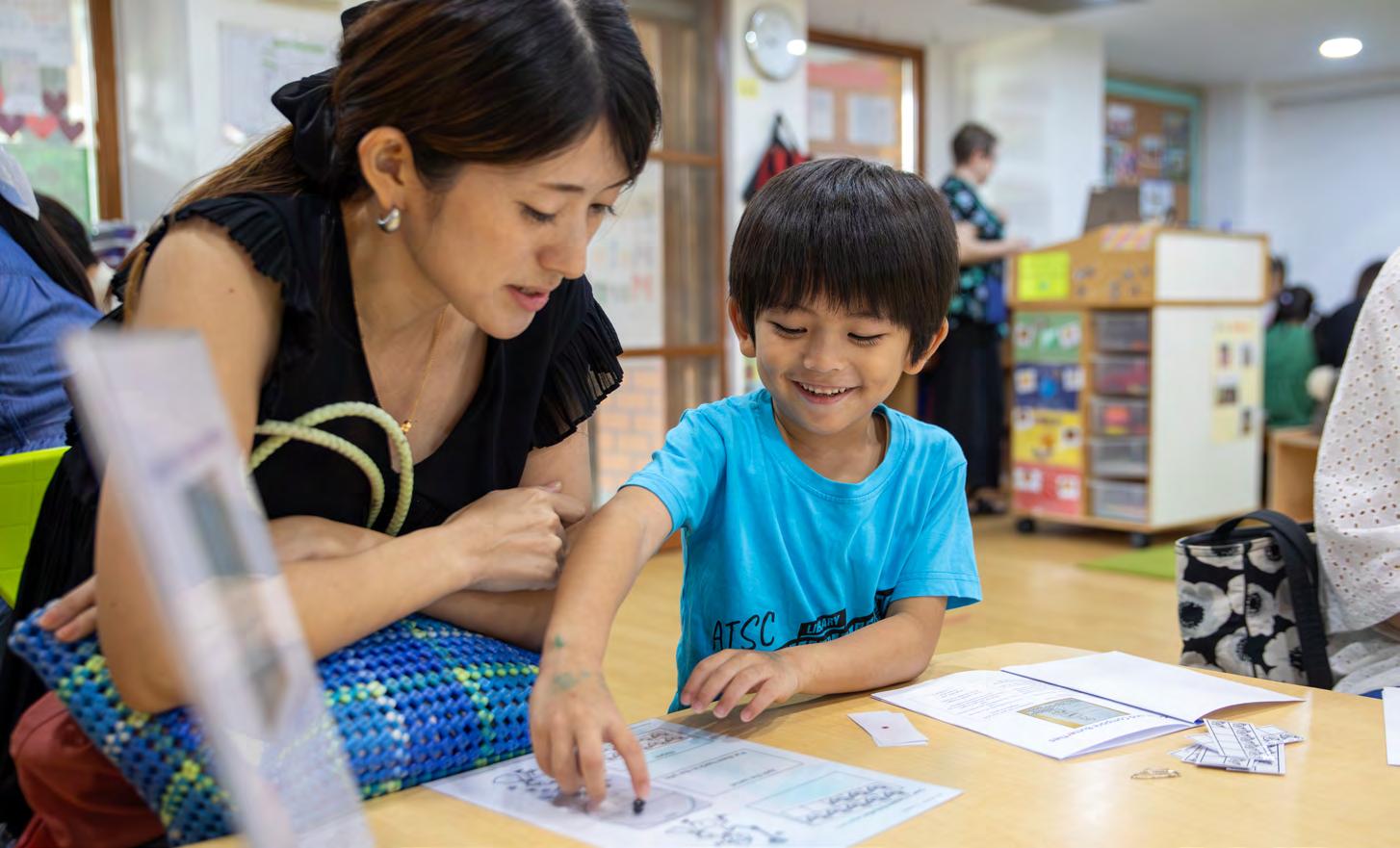
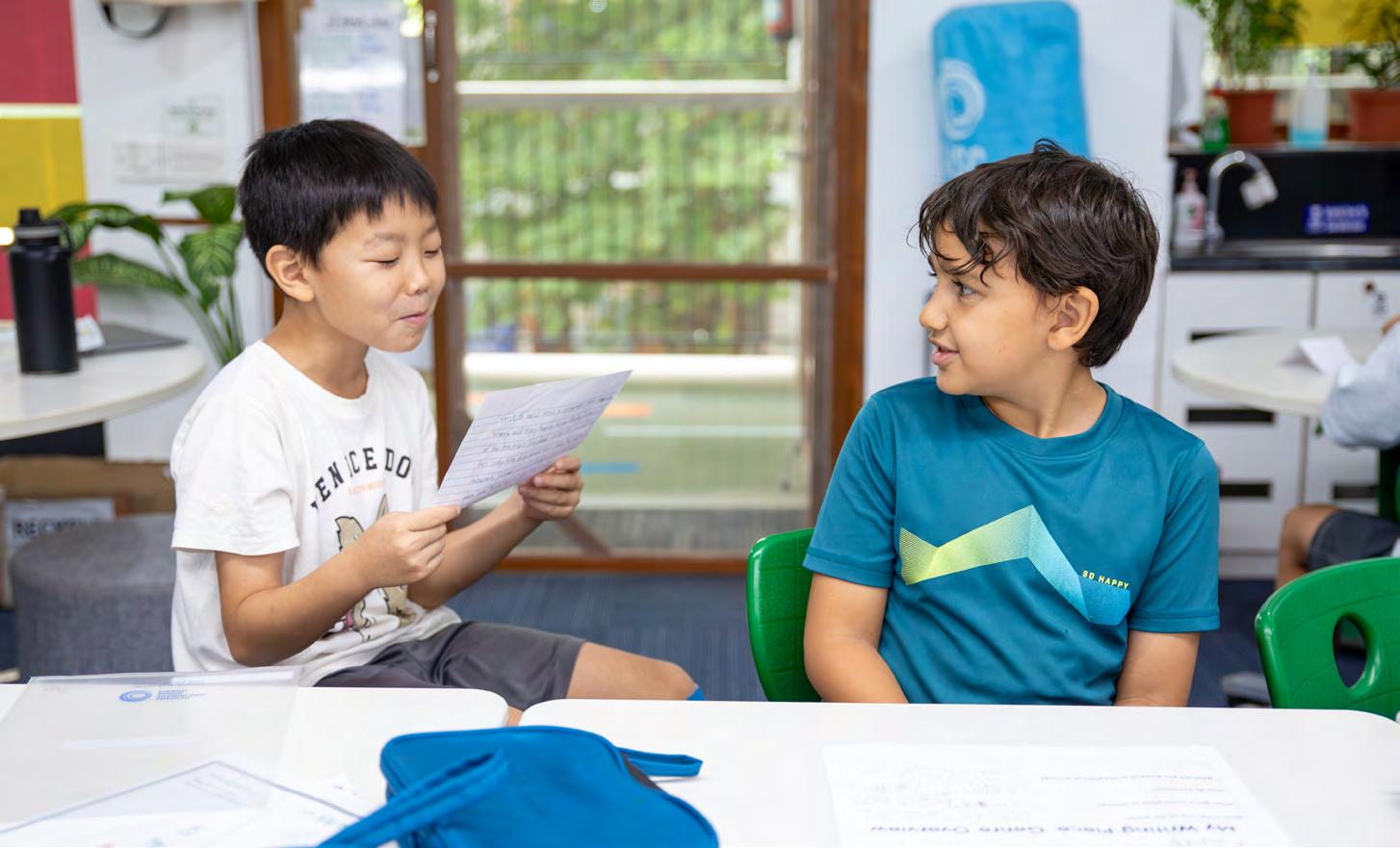

SOCIAL STUDIES
AISC’s Disciplinary Transfer Goals for Social Studies
Students will be able to independently use their learning to…
• Develop relevant questions that frame and advance an inquiry connected to the social sciences;
• Gather, evaluate, and analyze sources to develop and support claims;
• Identify and analyze local, regional, and global issues in order to be capable of taking informed action that is meaningful to self and society;
• Apply disciplinary understanding to draw conclusions about the past, present and plan for the future; and
• Critically examine diverse contexts, perspectives, and cultures to be internationally minded.
Social Studies in the Elementary School
The Social Studies Department at AISC is committed to providing a program that will encourage reflective and analytical thinking and de-emphasize rote learning. It is our intent that students learn how to make their own interpretations, so that by the time they leave school they are able to think and learn independently and are aware of their responsibilities as global citizens. The Social Studies curriculum is based on the College, Career, and Civic Life Framework (C3) which is founded on an inquiry-based approach to teaching Social Studies.
Through examining concepts in Social Studies, students develop a sense of personal cultural identity as well as learn to respect and value the differences of others.

SCIENCE
AISC’s Disciplinary Transfer Goals for Science
Students will be able to independently use their learning to…
• Ask questions, make observations, and conduct investigations to understand the natural world;
• Communicate scientific ideas, arguments, and results for a variety of purposes and audiences;
• Use technology and scientific information to make informed decisions;
• Seek new scientific information and revise understanding when new evidence warrants; and
• Use knowledge of science and engineering concepts to make sense of the world around them.
Science in the Elementary School
The goal of the AISC Elementary Science Program is to spark curiosity, build scientific thinking, and help students care for the world around them. Students learn to ask questions, explore through investigations, and explain their ideas clearly. They use science and technology to solve problems, make decisions, and transform their thinking when they discover new information. Our program follows the Next Generation Science Standards (NGSS), helping students do science, understand big ideas, and connect learning across subjects.

KINDERGARTEN
Uniqueness of Me
English Language Arts, Science, Social Studies
Learners begin the year by discovering what makes them special and how their unique traits help them connect with classmates. Guided by the question, “How can I share my uniqueness with others?”, they explore stories, ask thoughtful questions, and reflect on how to learn and work together respectfully.
Weather Watchers
English Language Arts, Social Studies
Through observation and investigation, learners explore how scientists study weather to recognize patterns and prepare for different conditions. Guided by the question, “How do people prepare for different weather?”, they examine the effects of sunlight, use tools to measure weather, and design ways to stay safe and comfortable in changing environments.
Pushes and Pulls
English Language Arts, Science
Hands-on exploration helps learners understand how the strength and direction of pushes and pulls affect motion. Guided by the question, “How do pushes and pulls change the way things move?”, they conduct experiments, make observations, and apply problem-solving skills to learn about forces.
Taking Care of the Environment
English Language Arts, Science, Social Studies
By studying plants, animals, and their habitats, learners explore how living things are connected and rely on one another to survive. Guided by the question, “How can people help the environment?”, they observe natural patterns, investigate human impact, and explore how communities can protect the Earth.
Throughout the year, learners focus intensively on the following core areas in Mathematics.
• Know number names and the count sequence
• Count to tell the number of objects
• Compare numbers
• Understand addition as putting together and adding to, and understand subtraction as taking apart and taking from
• Work with numbers 11- 19 to gain foundations for place value

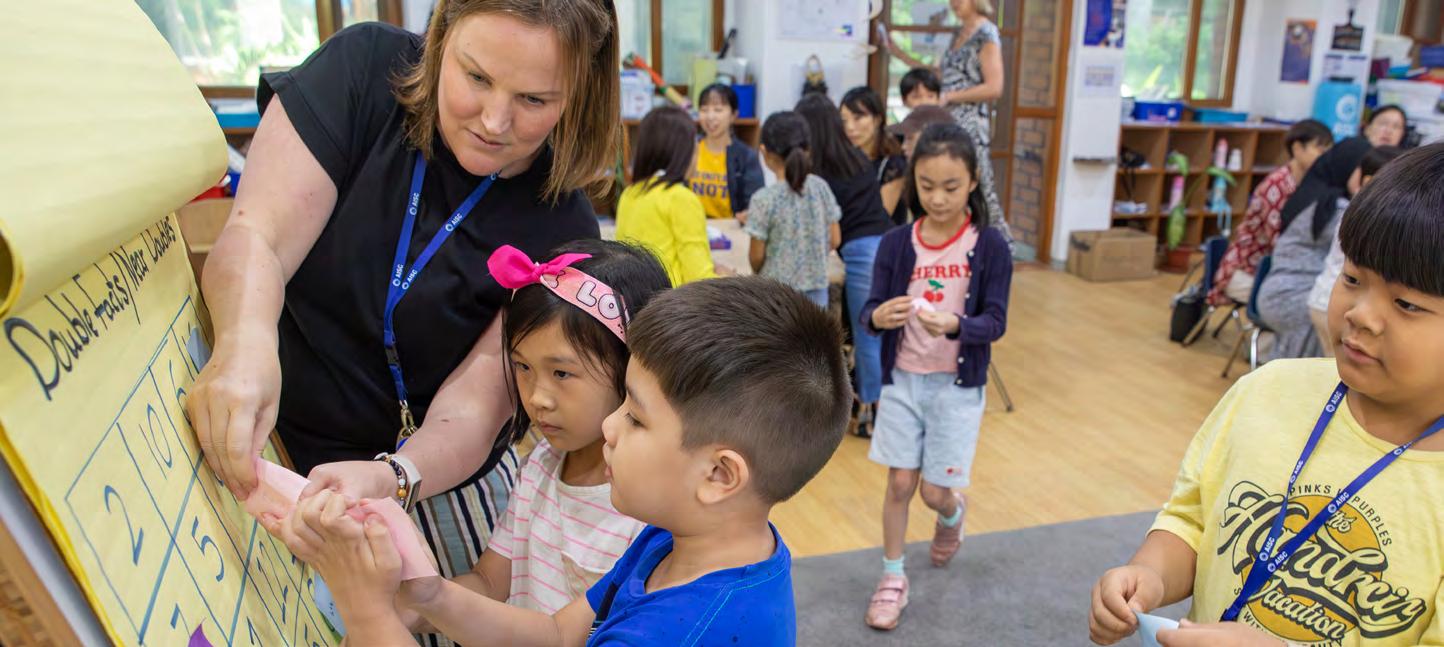
GRADE 1
First Grade Foundations
English Language Arts, Social Studies
Bright Ideas: Communicating with Light and Sound
English Language Arts, Science
Patterns in the Sky
English Language Arts, Science, Social Studies
In exploring how rules and systems shape the classroom, learners reflect on how these structures support fairness, safety, and productivity—and how they can be improved to meet everyone’s needs. Guided by the question, “How do systems and rules help a community work?”, learners consider their role in building a respectful learning environment.
Curiosity about light and sound leads learners to discover how these forces work and how people use them to communicate, solve problems, and invent tools. Guided by the question, “How can we use light and sound to send messages or solve problems?”, they apply scientific thinking to share their insights through writing and creative solutions.
By observing the sun, moon, and stars, learners uncover patterns that help people measure time and tell stories about change. Guided by the question, “What can we learn by watching the sun, moon, and stars?”, they explore how tools, language, and illustrations help us make sense of the sky and share what we notice.
Learning from Life
English Language
Arts, Science, Social Studies
Our Turtle Neighbors
English Language
Arts, Science, Social Studies
Follow the Map, Tell the Tale
English Language
Arts, Science, Social Studies
Exploring the lives of plants and animals, learners identify patterns and make connections between offspring and their parents to understand how living things survive and grow. Guided by the question, “What patterns can we see in how living things survive?”, they use writing, speaking, and visual texts to explain ideas and share discoveries.
Investigation into sea turtles’ needs and the threats they face motivates learners to use persuasive language to inform and inspire others. Guided by the question, “Why is it important to share our opinions and take action?”, they collaborate to advocate for living things and promote informed action.
Through the lens of storytelling, learners imagine a character’s journey and use maps, settings, and descriptive language to bring that story to life. Guided by the question, “Where can our characters go, and how can we help others follow their journey?”, they blend narrative writing with mapmaking to lead readers through creative adventures.
Throughout the year, learners focus intensively on the following core areas in Mathematics.
• Represent and solve problems involving addition and subtraction
• Understand and apply properties of operations and the relationship between addition and subtraction
• Add and subtract within 20
• Work with addition and subtraction equations
• Extend the counting sequence
• Understand place value
• Use place value understanding and properties of operations to add and subtract
• Measure lengths indirectly and by iterating length units

GRADE 2
Who We Are: Stories That Shape Us
English Language Arts, Social Studies
Earth Explorers
English Language Arts, Science
Powerful Stories
English Language Arts, Science, Social Studies
Through storytelling, writing, and artifacts, learners explore how experiences, culture, and history shape identity. Guided by the question, “How do our experiences, culture, and history shape our identity?”, they listen to and share personal stories to appreciate diverse identities and strengthen community connections.
This unit invites learners to examine how landforms are shaped by natural forces and how people respond to and represent these changes. Guided by the question, “How does geography influence how people live and interact with their environment?”, they connect their personal geographies to a broader understanding of Earth’s landscapes through mapping, modeling, and writing.
By writing realistic fiction, learners discover how writers craft engaging stories that express thoughts, emotions, and experiences. They explore the guiding question, “How do writers make their stories engaging?” through dialogue, description, story structure, and revision.
Learning from Life
English Language
Arts, Science, Social Studies
Young Entrepreneurs
English Language Arts, Science, Social Studies
Exploring the lives of plants and animals, learners identify patterns and make connections between offspring and their parents to understand how living things survive and grow. Guided by the question, “What patterns can we see in how living things survive?”, they use writing, speaking, and visual texts to explain ideas and share discoveries.
Exploring needs, wants, and how resources are used, this unit challenges learners to think like entrepreneurs. Guided by the question, “How do people’s needs, wants, and available resources affect the choices they make?”, they design and promote their own products through opinion writing, decisionmaking, and pricing strategies.
Nature’s Neighborhoods
English Language Arts, Science, Social Studies
In this study of ecosystems, learners examine how living things depend on one another and how changes in an environment can impact all life within it. With the question, “How do living things depend on their environment and on each other to survive?” at the center, they synthesize information from texts and scientific investigations to develop informative and opinion writing.
Poetry: Words at Play
English Language Arts, Science, Social Studies
Delving into the rhythms and language of poetry, learners explore how figurative language, word choice, and imagery convey powerful emotion and meaning. Centered on the question, “How does poetry use rhythm, word choice, and figurative language to create meaning and evoke emotion?”, they write, publish, and perform original poems to build fluency and amplify their voices.
What’s the Matter?
English Language Arts, Science, Social Studies
Hands-on experimentation and scientific inquiry guide this exploration of how materials behave and change. As they investigate the question, “How do the properties of materials affect how they can be used and changed?”, learners test ideas, examine reversible and irreversible changes, and communicate their discoveries through informative writing.
Throughout the year, learners focus intensively on the following core areas in Mathematics.
• Represent and solve problems involving addition and subtraction
• Add and subtract within 20
• Understand place value
• Use place value understanding and properties of operations to add and subtract
• Measure and estimate lengths in standard units
• Relate addition and subtraction to length

GRADE 3
Unit
Weather: From Stormy Skies to Sunny Days
English Language Arts, Science, Social Studies
Twist the Tale: Rewriting Stories Across Time
English Language Arts, Social Studies
The Circle of Life
English Language Arts, Science, Social Studies
Unit Summary
Exploring the contrast between weather and climate, learners investigate how people use tools, data, and writing to respond to extreme weather events. Guided by the question, “How can we solve problems caused by extreme weather?”, they examine the impact of weather on communities and develop creative, real-world solutions.
As they trace how fairy tales change across cultures and time, learners uncover what these stories reveal about the beliefs and environments of the people who tell them. Guided by the question, “What can fairy tales teach us about the people and places they come from?”, they compare and adapt stories to reflect different perspectives and historical contexts.
By exploring fossils, life cycles, and inherited traits, learners investigate how animals grow, adapt, and survive in diverse ecosystems. Guided by the question, “How do animals survive and thrive in different ecosystems?”, they apply scientific thinking to explain their discoveries and suggest responses to environmental change.
Out of This World:
Creating Science Fiction Stories
English Language Arts, Science, Social Studies
Kids Have Rights To0! Speaking Up and Speaking Out
English Language Arts, Science, Social Studies
Move it! Move it! Forces at Play
English Language Arts, Science, Social Studies
Imagination leads learners into the future as they explore how technological change influences characters, settings, and plot in science fiction. Guided by the question, “How do characters, settings, and plots change when we imagine the future?”, they craft vivid stories and bring their visions to life through writing, collaboration, and oral storytelling.
With a focus on rights, fairness, and advocacy, learners examine how rules protect rights and how experiences shape opinions. Guided by the question, “How can I use my voice to inspire change?”, they use persuasive writing—with facts, reasons, and examples—to speak up and make a difference in their communities.
Learners investigate the forces behind motion and how patterns help predict movement, while examining how magnets and other forces can be used to solve practical problems. Guided by the question, “How can magnets be used to solve reallife problems?”, they conduct investigations and communicate their findings through scientific writing and visuals.
Throughout the year, learners focus intensively on the following core areas in Mathematics.
• Represent and solve problems involving multiplication and division
• Understand properties of multiplication and the relationship between multiplication and division
• Multiply and divide within 100
• Solve problems involving the four operations, and identify and explain patterns in arithmetic
• Develop understanding of fractions as numbers
• Solve problems involving measurement and estimation of intervals of time, liquid volumes, and masses of objects
• Geometric measurement: understand concepts of area and relate area to multiplication and to addition

GRADE 4
Unit
Verses and Voices: A Celebration of Language
English Language Arts, Science, Social Studies
The Price of a Choice: Stories About Spending, Saving & Surviving
English Language Arts, Science, Social Studies
Unit Summary
Through poetry, students discover how rhythm, imagery, and word choice can express powerful ideas and emotions. Guided by the question, “How can I use poetic techniques to express my ideas creatively?”, they experiment with language and voice to craft original poems and perform them with confidence and meaning.
By exploring needs, wants, trade, and interdependence, learners investigate how economic choices shape individual lives and entire communities. Guided by the question, “What drives people to make economic choices, and what are the consequences of those decisions?”, learners write narratives that reflect real-world dilemmas and develop a deeper understanding of global economics.
Forces of Nature: From Crumbling Cliffs to Creative Solutions
English Language Arts, Science, Social Studies
See, Sense, Survive: Exploring Life Through Science
English Language Arts, Science, Social Studies
Voices of Resistance: Stories that Changed History
English Language Arts, Science, Social Studies
Light It Up! Exploring the Power of Energy
English Language Arts, Science, Social Studies
Learners examine how natural forces like weathering and erosion transform Earth’s surface, and how people respond to these changes. Guided by the question, “How can we use writing and research to advocate for solutions to environmental problems?”, they use data, visuals, and multimedia to communicate ideas and propose innovative solutions.
Using observation and research, learners explore how the body parts and senses of living organisms help them survive in their environments. Guided by the question, “How do plants and animals use their body parts to survive in their environments?”, they creatively present their learning through writing and teaching others about life science concepts.
Through historical analysis and literature, learners explore how individuals and groups resist injustice using words, actions, and courage. Guided by the question, “What does it mean to resist injustice?”, they conduct research, engage in discussion, and write to express thoughtful perspectives on social movements and change.
Investigating sound, light, heat, and electricity, learners explore how energy moves and transforms in the world around them. Guided by the question, “How can we design solutions that use energy more efficiently or sustainably?”, they experiment, build, and communicate their findings through writing and innovative design projects.
Throughout the year, learners focus intensively on the following core areas in Mathematics.
• Use the four operations with whole numbers to solve problems
• Generalize place value understanding for multi-digit whole numbers
• Use place value understanding and properties of operations to perform multi digit arithmetic
• Extend understanding of fraction equivalence and ordering
• Build fractions from unit fractions by applying and extending previous understandings of operations
• Understand decimal notation for fractions, and compare decimal fractions


GRADE 5
Unit
Building our Learning Superpowers
English Language Arts, Social Studies
Matter in Motion
English Language Arts, Science
Unit Summary
By reflecting on their identities as readers, writers, and learners, individuals build fluency, expand vocabulary, and engage in meaningful writing practices. Guided by the question, “Who am I as a learner, reader, and writer?”, they develop their strengths, apply key strategies, and collaborate to grow as confident communicators.
Students act as scientists by observing, testing, and documenting the properties and changes of matter through experiments and structured scientific writing. Guided by the question, “How do scientists investigate, test, and explain changes in matter?”, they use academic vocabulary, nonfiction reading strategies, and collaboration to deepen their understanding and communicate their findings clearly.
Echoes of the Past
English Language Arts, Science, Social Studies
The Energy Chronicles
English Language Arts, Science, Social Studies
From Sky to Soil
English Language Arts, Science, Social Studies
Stand Up, Speak Out
English Language Arts, Science, Social Studies
Through the study of Ancient Greece, learners examine how geography, culture, and government shaped that society and continue to influence the modern world. Guided by the question, “What was daily life like for people in Ancient Greece?”, they compare past and present, deepen understanding with nonfiction texts, and write historical fiction grounded in research.
Learners investigate the flow of energy and matter through ecosystems while analyzing how authors and illustrators explain scientific ideas using words and visuals. Guided by the question, “How does energy move through ecosystems?”, they create graphic nonfiction texts that combine scientific accuracy with engaging storytelling.
Exploring Earth’s four interconnected spheres, learners examine how natural systems interact and how human actions influence these environments. Guided by the question, “How do Earth’s four spheres interact to shape our world?”, they interpret scientific models and texts to advocate for environmental solutions through multimedia and persuasive communication.
Inspired to make a difference, learners explore civic issues that matter to them and use research, writing, and public speaking to influence change. Guided by the question, “What does it mean to be an advocate?”, they consider diverse perspectives, write opinion pieces, and take action.
Beyond the Stars
English Language
Arts, Science, Social
Studies
Delving into fantasy and science fiction, learners study how writers craft imagined worlds and dynamic characters using figurative language, dialect, and narrative structure. Guided by the question, “How can scientific knowledge be incorporated into creative writing?”, they create original stories that blend imagination with real-world ideas and themes.
Throughout the year, learners focus intensively on the following core areas in Mathematics.
• Understand the place value system
• Perform operations with multi-digit whole numbers and decimals to hundredths
• Use equivalent fractions as a strategy to add and subtract fractions
• Apply and extend previous understandings of multiplication and division to multiply and divide fractions
• Geometric measurement: understand concepts of volume and relate volume to multiplication and to addition
• Graph points in the coordinate plane to solve real-world and mathematical problems

ELEMENTARY SPECIALIST SUBJECT AREA PROGRAMMATIC OVERVIEWS
HEALTH AND PHYSICAL EDUCATION
AISC K-12 Disciplinary Transfer Goals for Health and Physical Education
Students will be able to independently use their learning to…
• Set and reflect on goals in order to make decisions and maintain a healthy lifestyle;
• Apply knowledge and understanding of the benefits of movement;
• Advocate for the health and wellbeing of self and others in a variety of contexts; and
• Select and participate in beneficial and enjoyable physical activities.
Elementary Physical Education Program Overview
The AISC Elementary PE department strives to ensure that students are involved in a process of self- awareness, self-reflection, and improvement that focuses on the interconnectedness of physical, social, and emotional health in an environment of physical and emotional safety. Through our Physical Education program, students gain an understanding of movement patterns and routines, body and spatial awareness and apply these in physical challenges such as
different athletic or sporting contexts. Students engage with different social contexts to learn, practice, apply, and enhance their developing movement skills. The Australian Health and Physical Education standards serve as the foundation for the Health and Physical Education curriculum.
Aquatics
All students from Early Years to Grade 5 engage in a semester long aquatics course. The Red Cross Swimming standards provide a framework for students to be appropriately leveled and challenged in aquatic activities. Students will work on various skills, from blowing bubbles to basic rescue techniques and water survival skills while learning and refining the core swimming strokes. Through participation in the Aquatics program, students increase waterrelated movement competency and gain safety knowledge for enjoyment in and around water.
Lower Elementary Program Overview
The Lower Elementary Physical Education program develops the foundations of effective movement, social interactions, and intrinsic motivation through the context of physical and movement activities. Students are encouraged to explore a variety of movement patterns and new social contexts. Students in this program learn the foundational skills of locomotor and manipulative movements while attaining vocabulary and knowledge that contribute to lifelong wellbeing.
Upper Elementary Program Overview
The Upper Elementary Physical Education program fosters student collaboration, strategic thinking, and student autonomy through the context of physical and movement activities. Students are encouraged to step outside of their comfort zones in social, cognitive, and physical challenges that meet the needs of each individual child. Students in this program learn the skills required to perform a variety of movement activities and also learn to understand and practice behaviors that contribute to lifelong wellbeing.
K-2 Physical Education Units Include:
Initiative & Collaborative Challenge: Students are introduced to routines and behaviors for safe and enjoyable participation in Physical Education. Students participate in games and activities that develop self confidence, cooperative skills, and empathy. Through participation in this unit, students will identify
activities both inside and outside of the classroom to engage in for both enjoyment and challenge. Students will discover the roles and responsibilities of individuals in team challenges. Students will also begin to be able to describe and apply the rules and parameters of successful participation in individual and group activities during PE lessons.
Movement Competency: Students are introduced to and refine a range locomotor, stability, and manipulative skills that they will be able to identify and practice for increased coordination, balance, and movement accuracy. Through participation in discrete practice and organized games, students will begin to apply some fundamental movement skills and reflect on how these activities affect their bodies. As they progress, students will demonstrate increased coordination, balance, and movement accuracy and begin to add speed, strength, power, and fluency to these movements.
Gymnastics: Students increase the body control, coordination, and endurance needed to safely undertake an apparatus. Students at this level will first work to perform a forward roll, backward roll, handstand on the wall, and cartwheel on the flat surface of the mat. When ready, students will then move to performing these skills on various gymnastics apparatus.
Grades 3-5 Physical Education Units Include:
Movement Competency: Integrated into each strand of the Upper Elementary PE program is Movement Competency. Students will develop movement and manipulative skills through practice, training, and implementation in both a broad sense and in specific contexts within the other strands of PE. Students will understand themselves as movers, understanding strengths and areas for improvement with respect to the components of fitness. Students will learn, through regular participation, how physical, emotional, and mental health are combined for holistic wellbeing.
Initiative and Collaborative Challenge: Students will participate in individual and group challenge activities that require effective communication of their ideas and managing of emotions to solve problems and create positive outcomes. Students will understand the need for perseverance and the role of individuals in achieving team goals.
Games and Sports: Students will begin to understand a way of categorizing games that have a common tactical approach. Students will participate in small-sided games that require decision making to maintain possession in Territorial Games and maintain a rally in Net Games. Students will begin to
understand how space is a key concept in games. Students will continue to develop movement competency through use of equipment related to a specific game or modified sporting context.
Lifestyle & Recreational: Lifestyle and recreational activities are those which can enhance health and wellbeing across the lifespan. They include individual, group and active recreation activities. The specific context of these activities vary from year to year in the PE program and are determined by a combination of factors including student interest, teacher specialty, and geographic and cultural opportunities. Examples of these activities include but are not limited to distance running, cycling, skating, sprinting, pilates, kayaking, badminton, swimming, outdoor adventure, and rock climbing.
Gymnastics: Students in Grades 3–5 will work on strength, flexibility, alignment, and proper technique to tackle more difficult skills on both flat and raised surfaces including bars, rings, and vault. Specifically, students at this level will work on performing each skill with expression and confidence. After considering all platforms and safely progressing through each level, students will have the opportunity to create an individualized routine on an apparatus of choice.
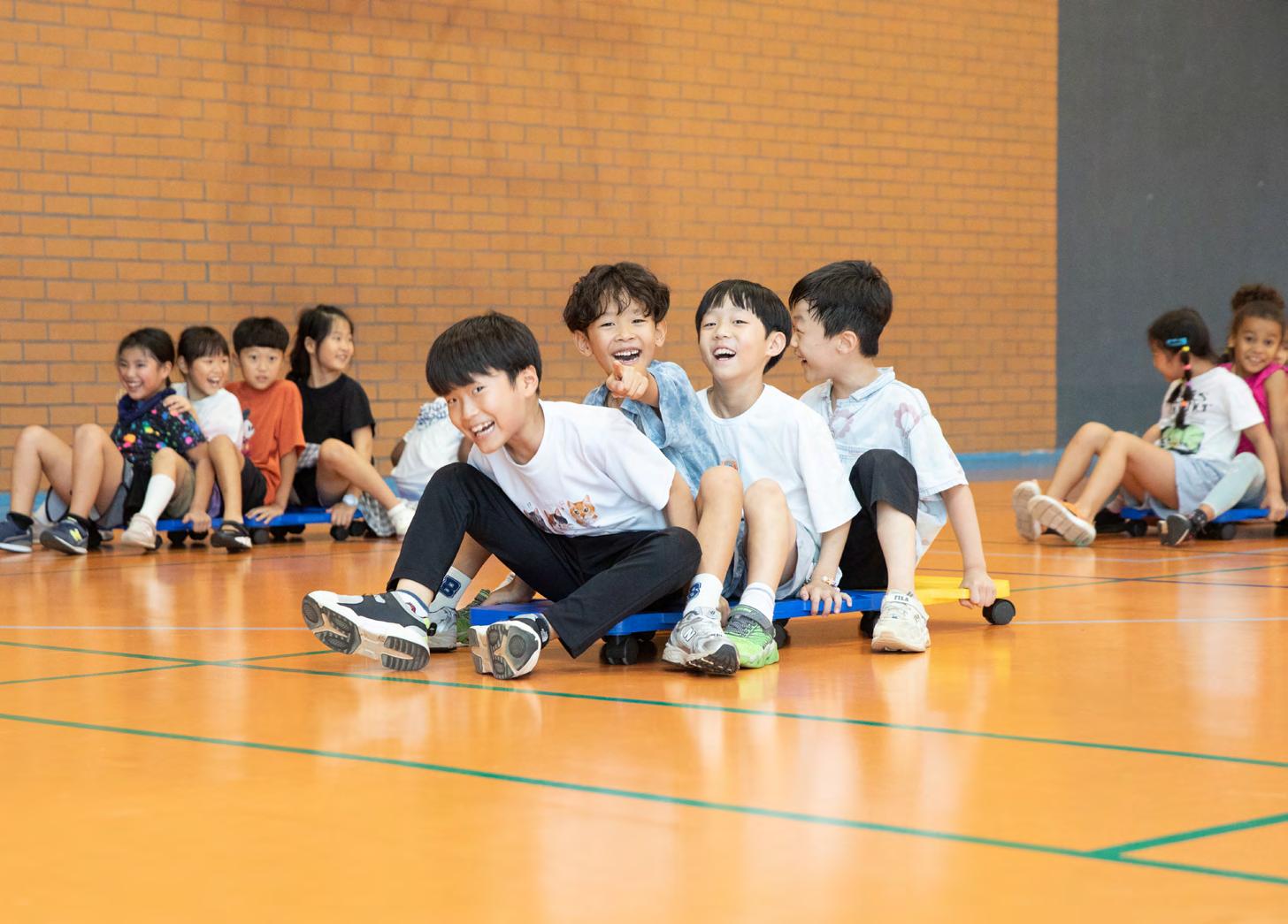
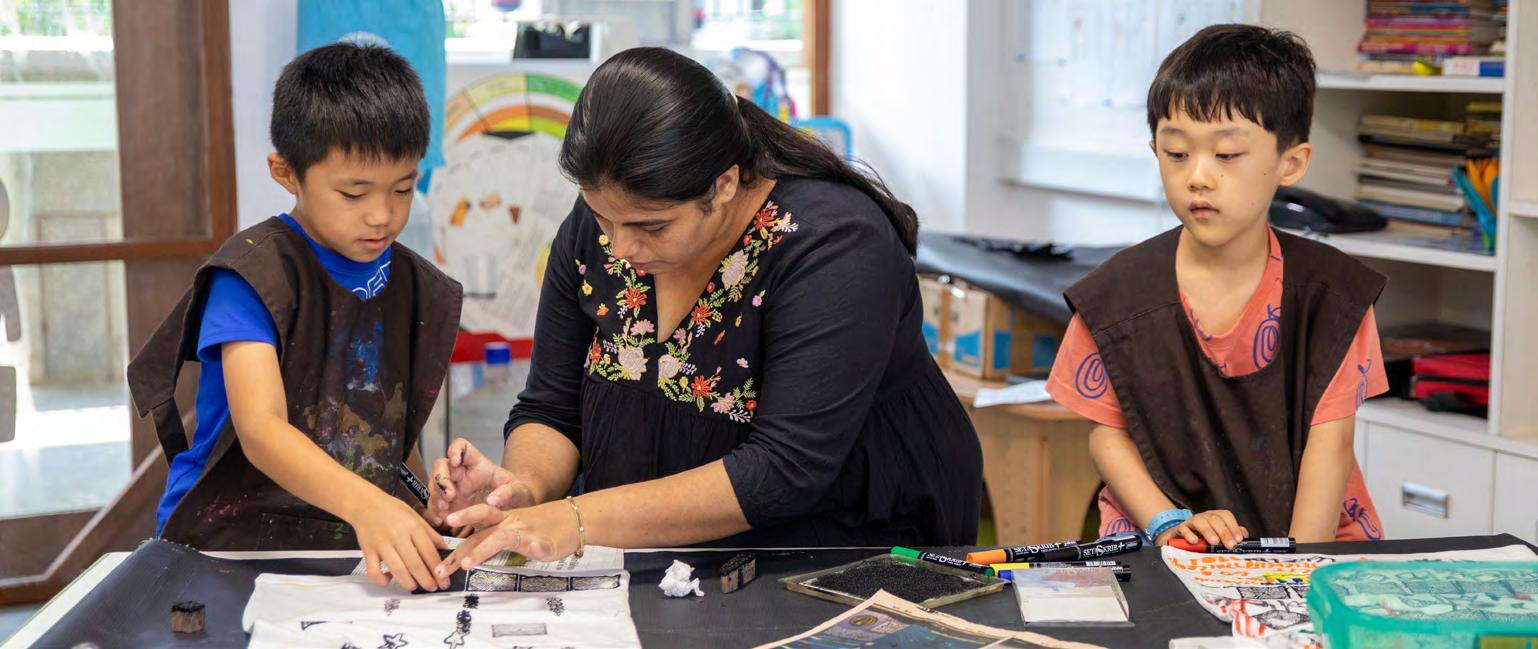
ART
VISUAL ARTS
AISC K-12 Disciplinary Transfer Goals for Visual Arts
Students will be able to independently use their learning to…
• Create art as a form of personal expression;
• Explore, investigate and respond to art with an inquiry approach;
• Think creatively and beyond convention, designing in multiple art forms;
• Use their artistic competence and literacy to be actively involved in the arts; and
• Collaborate and inspire others to be creative.
Art Program Overview
The aim of the AISC Visual Arts program is to build confidence and creativity by providing an authentic studio-based environment. Through personal choices, students are encouraged to explore and experiment, enabling them to develop their technical and conceptual skills. Through inquiry and investigation, we help students to find their personal voice in the creation of their own original artwork. The art curriculum is based on the National Core Art Standards, which integrates the processes, skills and knowledge, and criteria for successful learning for arts education. This outcomes-based approach to teaching and
learning in the arts emanates from artistic processes: planning, creating, responding, and connecting. Art lessons are adapted to the developmental level of each grade, beginning with basic skills and concepts in the early years and graduating to more sophisticated and challenging lessons and concepts in the upper grades.
Lower Elementary Art Overview
In Grades K–2, students are guided through imaginative art experiences which develop their creativity, curiosity, and love of learning art. Students are introduced to the elements and principles of art and begin experimenting with a variety of mediums. They explore connections between art and academic disciplines, creating awareness of how the world is interconnected. The Lower Elementary curriculum also fosters the development of students’ abilities to observe and discuss artworks created by various cultures and master artists.
Kindergarten Art Units Include:
Uniqueness of Me: Students express their uniqueness through a self-portrait project infusing their likes in revealing their identity. They learn observational drawing to represent their facial features. They also explore and experiment with colors to express their feelings in the artwork.
What Do I See… ?: Students experiment and play with materials and techniques to reveal personal observational perspectives in their artworks. Artistic point of view is reflected in students’ works of art.
Art in Action: Students will connect art and science through movement. They are exposed to a variety of art mediums and techniques to understand the concept of creating art through movement.
Our Environment: Through experimentation, students continue to build skills in various media. They create art that represents the natural environment.
Grade 1 Art Units Include:
We are all Artists!: In this unit students build an understanding of the artistic process and elements of art. Students grow their capacity to engage in the routines and procedures of the art studio. Students will explore multiple approaches to creative art.
Light and Color All Around: Students demonstrate safe and proper procedures for using materials, tools, and equipment while making art. They classify artwork based on different reasons for preferences.
Realism: Students use observation and investigation in preparation for making a work of art. They compare images that represent the same subject.
Imagination: Students develop understanding of the concept of organic and geometric shapes as well as textures. They engage collaboratively in exploration and imaginative play with materials.
Grade 2 Art Units Include:
Personal Identity: Students create works of art about events in their home. They make art or design with various materials and tools to explore personal interests, questions, and curiosity.
Properties of Materials: Students explore materials through art mediums that change (glass, clay, paper, metal). They repurpose objects to make something new.
Landscapes: Students perceive and describe aesthetic characteristics of one’s natural world and constructed environment. Students use a variety of media to create landscapes as they build their understanding of landscape art.
Interdependence: Students will synthesize and relate knowledge and personal experiences to make functional art for their SEVAI project. They discuss and reflect with peers about choices made in creating artwork.
Upper Elementary Visual Arts Overview
In Grades 3–5, students engage in more sophisticated and challenging explorations which further develop creativity, skill and knowledge of the visual arts. Students expand their ability to integrate the elements and principles of art and design into their works. They extend their understanding, practice and range of art media. Students continue making connections between art and academic disciplines, gaining deeper appreciation of interconnections within our world. Observing and analyzing mentor artists and artworks of many cultures serves to broaden students’ art experiences. Studies balance creating, presenting, responding and connecting to develop an authentic studio practice within a safe, nurturing and challenging environment.
Grade 3 Art Units Include:
Art Fundamentals: Students review and practice art elements and principles of design to develop art concepts and vocabulary expanding their visual perception and creative skills.
Legacies of the Past: Students explore works from historically rich artistic traditions of the past. They examine processes artists use to create works of art. They recognize that art changes over time depending on the time and place in which it is made. Students discover ways their artmaking connects to past artmaking.
Art and Nature: Students grapple with the many ways nature influences art. They identify and create from natural forms serving as inspirations. Students consider important topics regarding nature such as beauty, care, responsibility and sustainability .
Building Community Through Art: Students ponder how collaborative art making builds community. Students visually explore ways to enrich our community by joining imaginative ideas and efforts with others.
Grade 4 Art Units Include:
Art Fundamentals: Students review and practice art elements and principles of design to develop art concepts and vocabulary expanding their visual perception and creative skills.
Changing Landscapes: Students are introduced to the earth as a wondrous creation providing endless inspirations through varied landscapes. They engage with landscape artmaking through lenses of different cultures. Students consider personal landscapes—places having significance for themselves, using a variety of media to create landscapes.
Global Art: Students compare and contrast various global art traditions as an impetus for their own artmaking. . Students create art work inspired by local global art traditions.
Embracing Sustainability: Students consider how art can contribute to a healthy planet. They develop awareness and understandings of various natural art processes and create with eco-friendly materials such as natural watercolors, inks, charcoal, handmade paper and recycled items.
Grade 5 Art Units Include:
Art Fundamentals: Students review and practice art elements and principles of design to develop art concepts and vocabulary expanding their visual perception and creative skills.
Contemporary Evolving Art: Students look at today’s evolving art in an internationally influenced, culturally diverse and technologically changing world. Students consider art as a dynamic combination of materials and subjects expanding boundaries. They experiment in artmaking with a variety of materials and methods to begin developing their unique artistic vision and voice.
Art as Transformation: Students consider ways in which art can transform people and places. They identify how art can be used to inform/misinform or change beliefs, values and behaviors of individuals and communities. They then create artwork intent on projecting a message, viewpoint, or mood.
Perspectives: Students explore how artists apply concepts of line, space, and proportion to create the illusion of three-dimensional space in their artworks. Students apply this learning to create artworks in a variety of media using perspective. They apply formal and conceptual vocabularies of art and design to view surroundings in new ways.


PERFORMING ARTS
AISC K-12 Disciplinary Transfer Goals for Performing Arts
Students will be able to independently use their learning to…
• Develop and engage in their passions to find joy, peace, intellectual stimulation and meaning through the arts;
• Develop, refine, and demonstrate technical skills in a performing arts medium;
• Use artistic competence and literacy to be actively involved in responding to and participating in the arts; and
• Create and participate in performing arts experiences that evoke emotions and foster connections with themselves, others, and the world around them.
The Performing Arts Department at AISC believes that a strong training in instrumental, vocal, and theatrical arts are conduits for teaching creative thinking and self-confidence. Our mission is deeply aligned with the core values of AISC. We see performance as a powerful tool for promoting personal growth and communication. Through the performing arts, our students learn to convey feeling and emotion, and how to make a human connection with the audience. Students of the performing arts learn to support one another, collaborate with others, and grow into well-rounded individuals, present and engaged in the world around them.

MUSIC
Lower Elementary Music Overview
In Grades K–2, students are invited to develop an awareness for all cultures of music, an intellectual curiosity, and a lifelong love for learning in music. They will acquire basic skills and knowledge to create music of varying forms and analyze music created by peers. They will create music using a variety of instruments in a child-centered classroom, considering the learning styles and particular interests of each child. The Music Program follows the California Standards and uses the pedagogies found in Orff Schulwerk, Kodaly, and Feierabend Fundamentals. Units in the Lower Elementary Music Course are connected and overlapping, allowing for student choice and voice into the elements of a rich musical environment.
K-2 Music Units Include:
Music Fundamentals and Exploration: Students are introduced to “solfege” and the basics of melody. Students explore varying instruments to make music, with varying dynamics, pitch, rhythms, and tempos. Using the voice, body percussion and percussion instruments, students will explore basic concepts of rhythm, dynamics, harmony, tone color, texture, and form.
Concert and Performance Preparation: Students will develop aptitudes for performing on stage, in front of audiences as part of an ensemble. They inquire into what skills make a performer dynamic for their audience as well as contribute in a positive way to their group. Students will have the opportunity
to build confidence as performers, and understand how to appropriately be an audience member.
Music Composition and Improvisation: Students will develop original pieces of music, both written and “in the moment.” Students will compose pieces of vocal, instrumental, or other chosen medium. Throughout this unit, students will learn that music has form and structure as well as begin to develop their identity as a composer. Students will practice skills of asking for and providing feedback to peers on their specific pieces. Students will work to analyze feedback, making choice adaptations to their original compositions.
Artistry and Expressive Communication: Students will apply developed skill sets from the Music Fundamentals & Exploration and Music Composition & Improvisation Units to further their impact as a performer. This unit invites students to explore their development as a solo performer—building on their skills gained from Concert Preparation—and as an ensemble member.
Cultural Awareness and Diversity: Students explore instrumental, vocal, rhythmic, and other pieces of music from varying cultures around the world. They work to develop an appreciation for the diversity in music, as an expression of culture.
Upper Elementary Music Overview
The aim of the Upper Elementary Music Program is to provide an avenue for each child’s individual need for self expression, building on the fundamental music skills and knowledge they have from Lower Elementary. Through continued inquiry into understanding music as art, students are able to hear, speak and think in the medium of music. Units in the Upper Elementary Music Program are focused on refining individual talent, as well as exploring future areas of interest. Time is structured to allow for content and concept building, rehearsal, and reflection. The music program follows the California Standards and uses the pedagogies found in Orff Schulwerk and Kodaly.
Grades 3-5 Music Units Include:
Music Fundamentals and Structure: Structure creates order and clarity in music. Students are given structured and guided opportunities to explore and understand the building blocks of music. How do tempo, dynamics, rhythm, and beat complement and support melody? How do vocal music and instrumental music work together? How can our vocal instrument demonstrate
pitch proficiency in coordination with instrumental music? During this unit and throughout the year, students play a variety of instruments—pitched and unpitched—to add accompaniment to demonstrate the various elements of music, as well as demonstrate various rhythm patterns.
Concert Preparation and Performance: Music is one of the oldest forms of cultural expression and communication. Students will engage in formal and informal performances, reflecting on their growth. What collaborative steps should be taken to produce a quality performance? What is the role of rehearsal? How can performing as an ensemble, and performing individually, communicate meaning to an audience?
Composition and Improvisation: Students will explore the potential to elicit a response through the notation of music. Through composing and improvising, you learn to connect ideas with symbols, sound patterns, and musical elements. Composition and improvisation are grounded in prior knowledge and personal experience. Manipulation of the elements creates individuality in music. What inspires musical creation? When is one’s creative work ready to share?
Instrumental Technique: Students will explore the techniques and skills needed to learn an instrument. They will be invited to learn to play the recorder and other instruments, demonstrating simple songs, and exploring playing in harmony. Students will learn to read and notate music, perform melodies from the treble clef, and improvise endings using traditional notation. Are there other ways of notating or reading music? Is it connected to culture or history, or both?
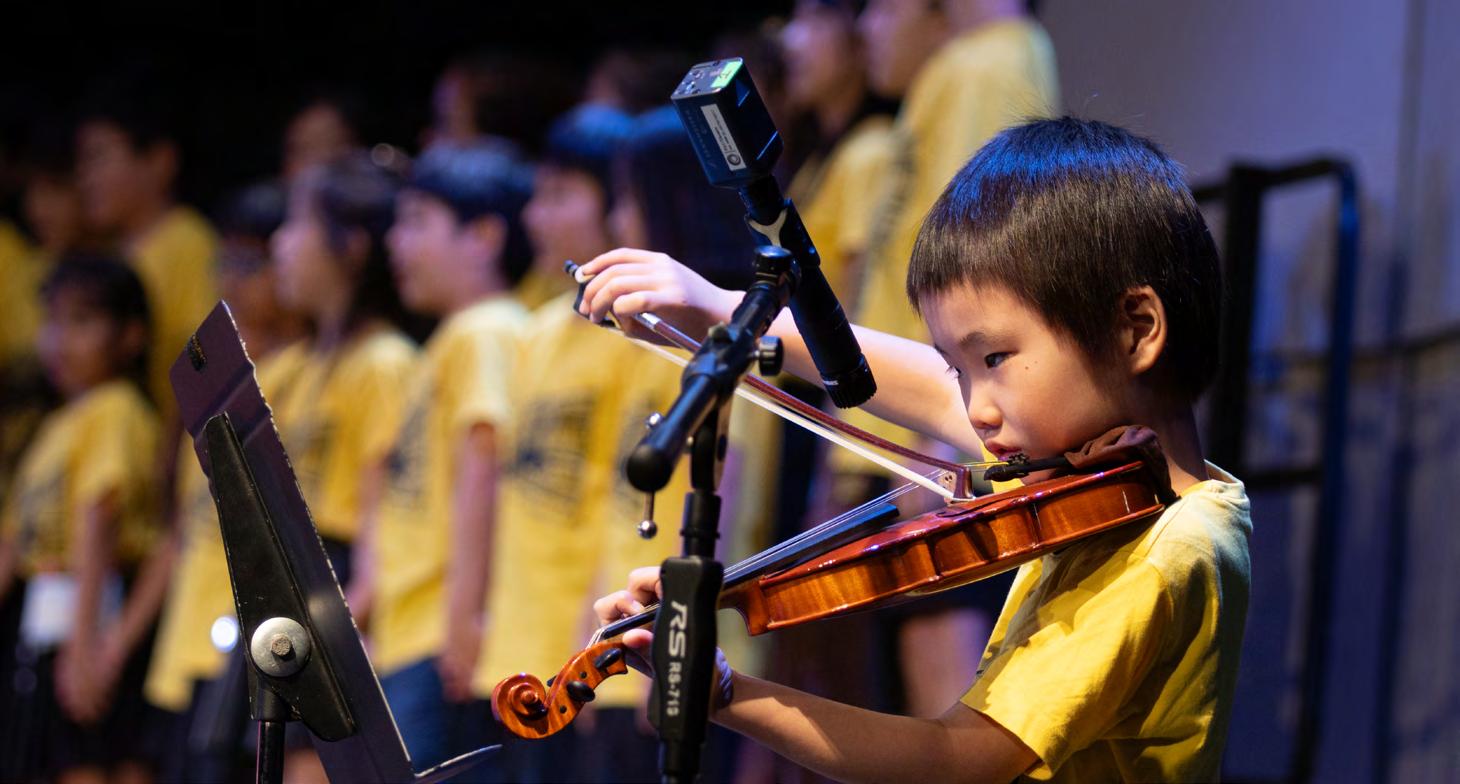

INDIAN STUDIES
AISC Grades K-5 Disciplinary Transfer Goals for Indian Studies
Students will be able to independently use their learning to…
• Appreciate the host country diversity, history, traditions, and culture.
• Demonstrate cultural understanding in varied settings.
• Analyze and appreciate cultural diversity and similarities to inform their decisions/actions as global citizens.
Indian Studies Overview
The aim of the Elementary Indian Studies Program is to provide students with opportunities to inquire into their host country. With a focus on experiential learning, students build understanding and appreciation for the diverse cultural and geographical environment.
Let’s Celebrate India (All Grades)
The celebration of India engages students in a variety of activities related to Indian culture. These experiences serve as a way for students to make meaningful connections to their host country and spark their curiosity and interest to learn more about India. Additionally, students demonstrate their understanding and appreciation by showcasing performances during the celebration.
Grade 1
Students develop their understanding of community by exploring the contributions of traditional community helpers in Chennai and India. They have the opportunity to interview community members and experience some of these jobs. Additionally, students begin to develop an appreciation for the diverse geographical environment by exploring the cultural significance of native animals and their importance to the local community. Finally, students explore the uniqueness of traditional South Indian cuisine.
Grade 2
Students expand their understanding of the diverse geographical environment by explaining the cultural significance of native plants and their importance to the local community. In addition, students further investigate, explain, and reflect on the concept of culture through comparisons of Indian culture and their own, including how music reflects culture. They share traditional games from their home country and then discover and play several traditional Indian games.
Grade 3
Students continue to develop their understanding and appreciation of Indian culture by reflecting on and making connections to their own experiences. They will learn the significance behind several Indian monuments. Then, they choose a person, event, or an experience in India they would like to commemorate and design their own monument in the Design Lab. Students also have the opportunity to learn about the customs and traditions of several Indian celebrations and demonstrate their understanding by organizing a celebration. Finally, students engage in an inquiry to explore how traditions have changed over time.
Grade 4
Students develop a deeper understanding and appreciation of local culture by investigating, explaining, and reflecting on the relationship between the people and perspectives of Indian culture, including traditional stories. In addition, students explore the history of kites and kite-flying in India. They learn the art of kite making from local kite makers in Chennai and then design their own kites in the Discovery Studio. Finally, they inquire into the lives and influences of change makers in India, both past and present.
Grade 5
Students reinforce and expand their knowledge of culture by making connections to other disciplines and investigating the relationship between the products and perspectives of Indian culture. Students create photo essays that visually document local culture and their experiences in Chennai. They inquire into the elements, purpose, customs, etiquette, and meaning of a variety of flags with a focus on India. Then, they design their own flag in the Discovery Studio. Additionally, students have the opportunity to select their own topic related to India and investigate the social studies concept of change over time.



ENGLISH AS AN ADDITIONAL LANGUAGE
We are proud to host a large population of students with diverse backgrounds whose first language is not English. Our goal is to provide English support to students to help them develop their academic and social language while encouraging the continued growth of their home language(s). All teachers strive to provide a language-rich environment that supports students’ understanding of the concepts presented in our curriculum. We have a collaborative planning and co-teaching model. There are English as an Additional Language (EAL) teachers working at every grade level to co-plan and co-teach with homeroom teachers. Both the EAL teacher and homeroom teacher know the language proficiency of the students and work as a team to support the language needs of all learners.
English
This class is offered to students in Grades 3, 4, or 5 who are new to English. During World Language English class, small class sizes offer targeted instruction for developing social and instructional speaking and listening skills. In addition, students will receive direct English language instruction of reading and writing skills that are connected to and used in the reading, writing, science and social studies units in each grade level. As students show developing proficiency with English, they have the opportunity to transfer to Spanish.
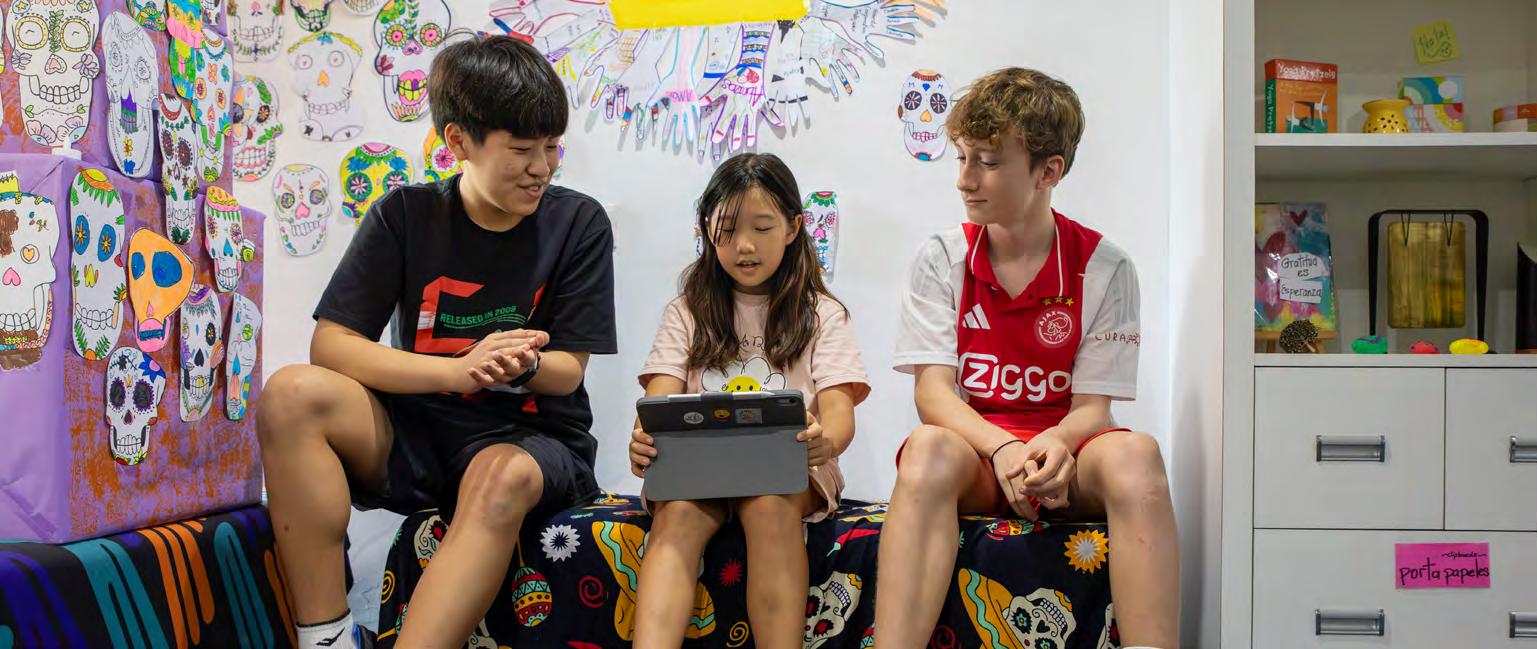
WORLD LANGUAGE GRADES 3,
4, AND 5
WORLD LANGUAGE
AISC Grades 3-5 Disciplinary Transfer Goals for World Language
Students will be able to independently use their learning to…
• Present information, concepts, and ideas on a variety of topics to various audiences of listeners or readers;
• Understand, interpret, and analyze what is heard or read on a variety of topics;
• Interact and negotiate meaning in spoken or written conversations to share information, reactions, feelings, and opinions; and
• Communicate effectively while demonstrating cultural understanding.
The goal of the AISC World Language Department is to empower students to become versatile, empathetic collaborators who will be proficient communicators in more than one language. The AISC World Language Department is guided by the American Council on the Teaching of Foreign Languages (ACTFL) Standards. The program cultivates effective use of the target language by providing students with an immersive classroom environment and authentic materials. Language learning throughout the program occurs through meaningful, contextually based interactions. Moreover, teachers encourage students to connect to other cultures and value international-mindedness. The AISC World Language Department believes that both language educators and
their students should use the target language to communicate in the classroom, ideally 90% of the time at all levels of language courses.
Elementary Spanish
The curriculum is designed for novice-level learners and facilitates interpersonal communication. While each unit introduces new vocabulary and sentence patterns, there are also many opportunities for students to build upon previously learned languages. Students are introduced to the history, traditions and customs of Hispanic countries and begin to identify similarities and differences between those cultures and their own. A variety of formative and summative assessments, such as interactive roleplay and audio/visual presentations and projects, are used to measure student progress. In Grade 4, students start to expand their communication skills through questioning and responding orally. In Grade 5, students are encouraged to elaborate their responses orally and in writing.
Grade 3 Units Include:
• Welcome to Spanish Class!
This unit introduces basic vocabulary and phrases related to the classroom environment and routines. Students will learn to identify and name items in the classroom, engage in simple classroom interactions, and understand basic instructions in Spanish to navigate the classroom setting. Additionally, they will practice listening and speaking skills through classroom-related activities and role-plays to develop their language proficiency.
• All About Me
Students learn to introduce themselves, including their names, where they are from, their birthday, and how old they are. To do so, students will learn and apply vocabulary focused on numbers, months, days of the week, and colors. Students will develop their oral production skills by sharing information about themselves in the target language.
•
My Friends
Students expand upon the basic questions introduced in the previous unit in order to introduce themselves and their friends in the target language. They will practice describing their friends, including where they are from, how old they are, and their likes and dislikes. Students expand their vocabulary to include descriptors as they engage in partner conversations.
• My Hobbies
This unit introduces basic vocabulary and phrases related to common hobbies, such as playing sports, drawing, dancing, and cooking. Students will learn to express their likes and dislikes for different hobbies in Spanish, as well as ask and answer simple questions about hobbies using basic sentence structures. In addition, they will expand their cultural awareness of popular hobbies in Spanish-speaking countries.
Grade 4 Units Include:
•
A Week at School
Students learn to name and describe school subjects, make a personalized weekly school schedule, and have a conversation about a week at school. They learn how to understand and apply sequencing words to describe their schedule. Students will also learn to tell time and express preferences for particular subjects.
• My Family
Students learn how to name and describe personal details about their own lives and those of family members. Students become more proficient with introducing themselves and people they know, as well as appropriately asking and answering basic questions. They will add to their repertoire of vocabulary when describing one’s self and others in this context.
• My Home
In this unit, students learn to name and describe rooms of a house, some common household objects, and placement using prepositions. They ask and answer questions about where they live, what their homes are like, and what they do in their homes. They will apply their growing vocabulary to design and present their dream home.
• Traditional Foods
This unit introduces basic vocabulary and phrases related to different types of food. Students learn to identify and name common foods in Spanish, express their preferences, and engage in simple conversations using basic sentence structures. They will participate in interactive activities, such as role-plays, to practice listening and speaking skills. In addition, they will grow their cultural awareness of food traditions in Spanish-speaking countries.
Grade 5 Units Include:
• Healthy Habits and Routines
Through the Healthy Habits lens of the AISC Wellbeing Framework, students focus on communicating about themselves, their families, their routines, and their weekend activities. They learn to describe both their home and school routines as well as express their preferences. Applying sequencing words, students describe their school schedule. Students revisit and deepen their ability to describe where they live and where they do different activities.
• My Community
Students learn to name and describe places in a community. They expand on the concept of routines, including more details when speaking and writing about where different key locations are situated within their community, as well as what activities they do in those locations. Students ask and answer questions about their communities, including the activities and events that take place. Students inquire into the cultural characteristics and traditions of communities in Spanish-speaking countries, as well.
• Clothing: Dress with Style!
Students will learn to name and describe different types of clothing. They engage in simple conversations about clothing preferences and weatherappropriate clothing. They will also develop cultural awareness of clothing styles and traditions in Spanish-speaking countries.
• Let’s Explore the Spanish Speaking World!
This culminating unit provides the opportunity for students to apply their language skills to prepare and deliver an oral presentation on a Spanishspeaking country of their choice. Through guided inquiry, students will deepen their understanding of Spanish-speaking countries as they inquire into the culture, geography, and traditions of a chosen country. This project encourages student autonomy, creativity, and global perspectives, and fosters a deeper appreciation for the diversity and richness of Spanishspeaking countries around the world.
DIGITAL CITIZENSHIP
A digital citizen knows how to harness the power of technology safely, respectfully, and responsibly.
Overview
Digital Citizenship is divided into two categories: Behavior and Ethical Decision Making and Information Literacy.
Behavior and Ethical Decision-Making
Students learn about how to avoid risky situations on the internet. They learn the difference between private and personal information. Students practice communicating responsibly and respectfully on the internet and in their digital community.
Information and Technological Literacy
Students learn to search the internet and evaluate websites. They also learn about copyright laws and plagiarism. Our students become technologically literate by using many forms of technology for learning. Throughout our curriculum, students will engage with Robotics, Hour of Code and Digital Storytelling.
Lower Elementary
Students learn about internet safety, privacy and security, and relationships and communication. There is a focus on exploring websites that are safe and suggested by an adult. They also learn about what information is safe to post online and what information needs to remain private. Students learn about how to communicate with their peers respectfully online. Information literacy is interwoven in curricular units.
Upper Elementary
Students learn about internet safety, how to build strong passwords, and cyberbullying. They also receive instruction on how to build a positive digital footprint. In Grade 5, students explore self-image and how the media influences our views. Information literacy is interwoven throughout curricular units.

EXPERIENTIAL
LEARNING OPPORTUNITIES
Design Lab/MakerSpace
Our Design Lab is a hands-on collaborative space inside our Elementary School for making, learning, exploring, and sharing. We have a range of both high-tech and no-tech tools, including cardboard, Lego, laser cutters, glue guns, hand tools, and even sewing machines. Experiences with robotics from Beebots and Cubettos to Lego WeDo and Mindstorms to Spheros are enjoyed by all grade levels. This space is helping to prepare our students with critical skills in the fields of science, technology, engineering, art, and math (STEAM).
Students in Grades EY–5 participate in a semester-long, project-based learning course centered around the AISC Design Cycle and coding. Beyond this structured course, we provide multiple opportunities for design projects that are intentionally integrated with other academic subjects. Throughout the year, students enhance their critical thinking and collaboration skills by working in teams or partnerships. Together, they tackle real-world problems by designing innovative solutions.
AISC Kitchen
Our AISC Kitchen is a space for students to explore, prepare, and cook with food—often using fresh ingredients that are grown by students in our AISC gardens. With careful supervision, children experiment with a range of recipes and make incredible growth in this vital hands-on learning environment. Opportunities range from developing basic kitchen skills such as measuring
and using knives as well as other kitchen equipment, to planning and preparing meals from scratch, such as fresh pasta and pasta sauce to be enjoyed for lunch.
Elementary Garden
Our gardens provide experiential learning opportunities for classes to adopt garden beds. Students collaborate to seed, plant, tend, harvest, and eventually cook and enjoy the fruits of their successes. Teachers connect these authentic learning opportunities to many curricular areas, in particular, science, math, and visual arts.
Field Trips
Field trips are recognized as important opportunities for learning: a shared social experience that provides the opportunity for students to encounter and explore novel things in authentic settings. These real-world experiences offer students the opportunity to apply new learning, serve as provocations for inquiry, and build new knowledge. Whether that’s a trip to Pallikaranai Marsh, Seva Samajam, The Tree Foundation, Adyar Eco Park, or the community garden, each experience that a student participates in contributes to their understanding of the world. Field trips provide opportunities for students to understand that what they learn within the walls of the classroom can help them solve the problems they see in the world around them.
Vision Projects
Vision Project days are an opportunity for students in Grades 3–5 to be immersed in dynamic multi day PBL projects as members of multi-age teams. The Vision Projects are grounded in inquiry, designed to emphasize attributes of the Vision for an AISC Learner, and engage students in solving real-world problems and answering complex questions. We value providing a wide range of project topics and styles for students to choose from. Collaborative teaching teams run each project. Many projects involve learning from outside experts who visit campus. Sharing public products, presentations, and celebrations with an authentic audience culminates project experience. As a result, students develop inquiry skills, deep content knowledge and strengthen both their understanding and personal development of the Vision for an AISC Learner attributes in the context of authentic, meaningful projects.
Student Council
The Elementary Student Council is open to all interested students in Grades 4 and 5. The Elementary Student Council’s purpose is to help students grow as responsible leaders. Members begin the year by creating working norms for our council to support our goals. At our weekly recess and lunch meetings, students have the opportunity to collaborate and share ideas with their peers. Members also plan and organize various events throughout the year which reach out to the Elementary student body at AISC, and at times, the AISC community and the community of Chennai.
